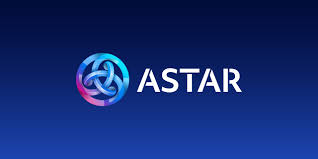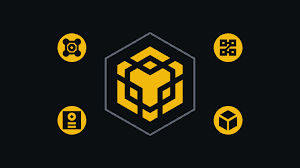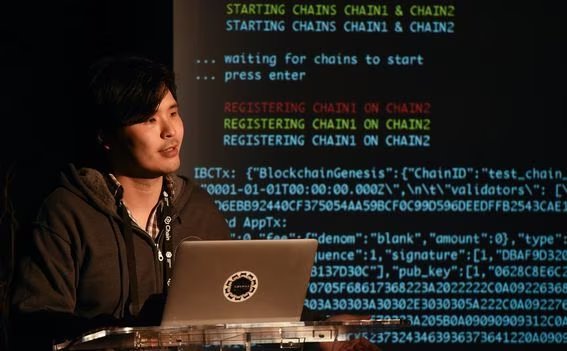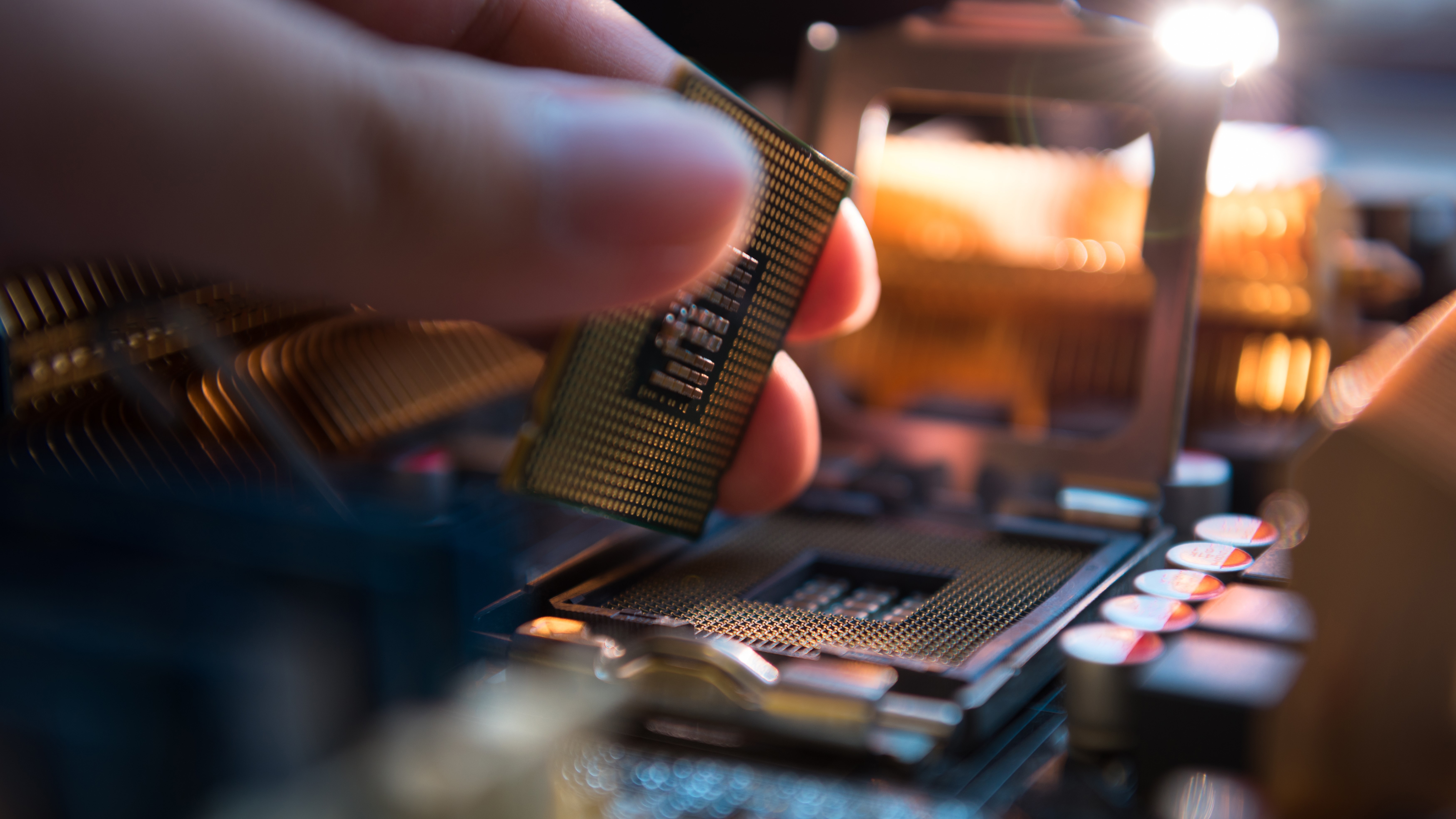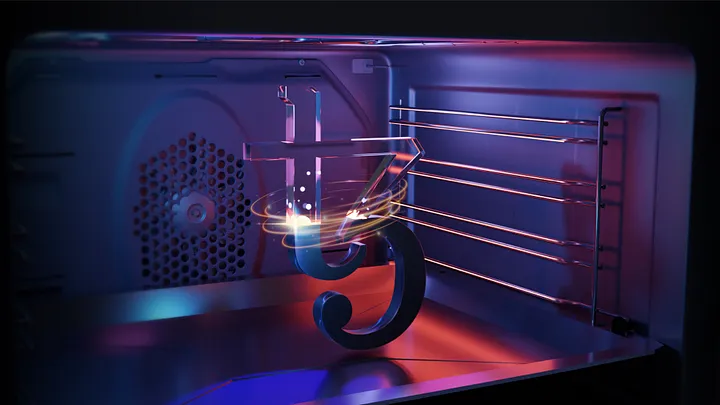TL;DR: With a new update or project being released almost every day, it’s clear the crypto ecosystem is constantly evolving. Cardano has gone through a lot of ups and downs to reach the level it’s at today — but it’s just the beginning. Knowing what brought it here and why it was created will lead you to make better decisions when investing or simply using Cardano.
In this article, we’re gonna dive into the Cardano ecosystem, answer all the $ADA related questions and even more. Prepare yourself for a history lesson and a journey to the future of Cardano!
What is Cardano (ADA)?
Cardano is a “third generation blockchain” created in 2015 by Charles Hoskinson. It is a smart contract platform that focuses on being highly decentralized. The concept of decentralization refers to the transfer of control and decision-making from a centralized entity (individual, organization, or group thereof) to a distributed network.
The consensus mechanism that Cardano uses is a flavor of Proof of Stake called Ouroboros. Its name originates from Egyptian mythology, and is a symbol that shows a snake that engulfs its own tail which symbolizes the eternal cycle. Ouroboros means that Cardano gets its security from validators that stake $ADA to secure the chain. This is different from Proof of Work blockchains, where miners replace the role of validators.
The concept of blockchains is not new, and Cardano is one of many such networks. The idea started in 2008 with the release of Satoshi Nakamoto’s Bitcoin Whitepaper. This kicked off the subsequent creation of many different types of networks under the same “blockchain” terminology.
Despite being similar in concept blockchains have all different architectures and use cases. What all have in common — including Cardano — is that they have to be secure. Security is the ability of a blockchain to prevent attacks and penalize malicious actors. This is usually done through their consensus algorithm and the mechanism they use to reach finality.
Finality is achieved when a block has been created and is now immutable, meaning that nobody can change the date inside. Over time many different mechanism have been designed, ranging from Proof of Work, Proof of Stake to novel ones called Proof of Spacetime. Each one hopes to achieve the best way of securing the network they are built for. As noted before, Cardano makes use of type of consensus mechanism we call “Ouroboros.”
Ouroboros divides Cardano time into slots (every second), blocks (every 20 seconds), epochs (every 5 days). In its current design, the Cardano protocol validates a block every 20 seconds. Notably, it is the first proof of stake protocol to be based on peer-reviewed research.
Over years, Cardano used different variations of the Ouroboros consensus such as: Ouroboros Classic, Ouroboros BFT, Ouroboros Praos, Genesis, Crypsinous, Cronos and Leios. The final version of is Ouroboros Omega, which will incorporate all the research carried out in recent years, and converges in a single protocol.
Cardano’s has been created with the goal of being an alternative to Ethereum. Ethereum has been created in 2014 and introduced the concepts of smart contracts. These are small applications that run inside a virtual machine called the Ethereum Virtual Machine. The EVM allows for a blockchain to process more than simple token transfers.
To give more info, it opened up the possibility to run applications in a decentralized manner. Applications usually run in the cloud or on your computer, so running them on a blockchain was unheard of at the time. This makes them uncensorable (nobody can stop them) and ensures they’re always online — as long as the chain they run on is processing transactions.
Plutus is the native smart contract language for Cardano. It is a Turing-complete language written in Haskell, and Plutus smart contracts are effectively Haskell programs. While it strives to achieve the same goal as Ethereum, it has its own version for how smart contracts should work.
The first one is the accounting model used by Plutus. Cardano uses the extended UTXO accounting model (EUTXO) which is based on Bitcoin’s UTXO model. In the UTXO model, a transaction has inputs and outputs. The inputs are unspent outputs from previous transactions. As soon as an output is used as input in a transaction, it becomes spent and can never be used again.
The output is specified by an address (a public key) and a value (consisting of an ADA amount or a native Cardano token). EUTXO extends the UTXO model by allowing output addresses to contain complex scripts.
The EUTXO model has been introduced with the Alonzo upgrade to support multi-assets and smart contracts. One of the advantages of such model is improved security. Verification is much simpler, as each UTXO can only be consumed once as a whole.
The second aspect is that Cardano plans to have two layers running at the protocol level, similarly to Ethereum.
Cardano proposes a two-layer structure derived from the base of the protocol. The layers of the network are called Cardano Settlement Layer (CSL) and Cardano Computation Layer (CCL). The blockchain will also support sidechains. As it currently stands, these findings are still in the research phase and haven’t been concretized into a product.
Cardano has a booming ecosystem that grows daily, all powered by its native token. The native token of Cardano, $ADA, is used actively throughout the network, from validators to users.
ADA is an inflationary token due to the way its tokenomics have been planned. The Cardano inflation rate sits currently at around 0.3% per epoch, which translates into an annual inflation of around 2%.
The monetary expansion is non-linear — greater amounts of ADA are released during the first years of the network but will decrease over time. By then, it’s expected that most rewards will come from transaction fees, solidified by the usage and adoption of the network.
The tokenomics of Cardano also specifies a maximum amount of tokens that will ever be created. The maximum amount that will ever be minted by the protocol is 45 billion ADA. As of 2022, the circulating supply is around 34 billion ADA.
At the genesis block distribution, a total of 57.6% of the total ADA supply was sold to the investors. 30% of the total supply was distributed to the reserve, while the rest of the ADA supply was distributed to Cardano’s main entities: IOHK (5.5%), EMURGO (4.6%), Cardano Foundation (1.4%).
For more details about how you can earn more Cardano by running a validator node at home check out our Cardano Mining & Staking guide. It includes the exact steps and best methods of earning more crypto like $ADA in 2024 and beyond.
When was Cardano (ADA) created?
Cardano (ADA) was created after Charles Hoskinson departed from Ethereum. Work began on the Cardano chain in 2015, but before that, a couple of important events happened. Most events revolve around the Cardano CEO and Founder, Charles Hoskinson.
The first meaningful event is Charles’ introduction to the crypto space. In 2013, he started the Bitcoin Education Project, whose role was to introduce newcomers to the concept of Bitcoin. Hoskinson established the Cryptocurrency Research Group that same year.
Another meaningful event was Charles joining a team that would later launch Ethereum. Crypto was a small community at that time, and Charles’ involvement with the Bitcoin Education Project draw the attention of other Bitcoin contributors. In late 2013, Hoskinson joined Vitalik and others that eventually founded Ethereum.
During his time working at Ethereum, Charles Hoskinson was the CEO of the Ethereum Foundation (EF). He held that position for six months, before he got into a conflict with Vitalik regarding the structure of Ethereum Foundation. Charles was opting for EF to become a for-profit foundation with a more formal governing structure, while Vitalik and the rest of the team wanted to keep EF as a non-profit.
The rest of the team was overwhelmingly in favor of keeping the Ethereum platform open-source and decentralized, free from venture capital contributions. This disagreement had Hoskinson voted out of the Ethereum Foundation.
After taking a six-month sabbatical in which he contemplated going back to mathematics, Charles was approached by former Ethereum colleague Jeremy Wood to form a new project called IOHK, an engineering company that builds blockchains for corporations, government entities and academic institutions.
The project we see today has the lofty vision of creating a truly decentralized smart contract blockchain that runs on Proof of Stake consensus. But if we dig a little deeper into the roots of Cardano we will find out the vision of the blockchain started out quite differently.
In 2015, Charles Hoskinson founded IOHK and began the Cardano ICO. At the time, Charles and Jermey Wood put in a few hundred thousand dollars to kickstart IOHK. With all the revenue coming in the form of Bitcoin, IOHK saw huge returns as the asset soared in value.
The biggest project IOHK was working on was Cardano. The original website of Cardano was adacoins.com. It was marketed to the Japanese and it was written in Japanese.
Charles was smart. He knew he couldn’t run the ICO in the US because of the stringent regulations, so he targeted the deep Japanese pockets.
ADA coin was marketed on their website as follows: “CARDANO is the most advanced project in the fintech industry, changing the lifestyle of the world. Innovating the cryptocurrency industry with a next-generation game platform based on ADA.”
Cardano was originally intended to be a gaming platform where users and operating organizations can’t cheat. ADA was intended to be the betting coin. This was the perfect strategy to market Cardano, as the Japanese have a passion for gaming and gambling.
Attain Corporation of Japan joined as a fundraising lead for Cardano and put together a marketing material targeting Japanese investors. In the marketing material, they described Cardano as a gaming platform. In the next pages they talk about casinos and gambling, showing the potential market size for Cardano.
Unfortunately, Cardano had partnered with a slick crypto salesman called Tadashi Izumi to host a series of closed-door business seminars to interest the Japanese in funding Cardano. They marketed Tadashi and Charles together, calling Charles a genius mathematician. Tadashi Azumi turned out to be a scammer. Right after the Cardano ICO, he started shilling Noah coin, which later turned out to be a rug pull.
Since this revelation, Charles tried to distance himself from Tadashi. Despite saying he doesn’t know Tadashi, Charles was spotted standing next to him at one of the pre-sale seminars of Cardano.
According to Cardano’s paper, ADA coins were scheduled to be released in Q4 2016. Cardano didn’t release it then, and communication was cut off with the Japanese. This led Japanese investors to believe Cardano was a scam, as there were no gaming platforms using ADACOIN, and ADACOIN couldn’t be used.
Luckily, the 2017 bull run came around and those investors were able to make their money back. The Cardano ICO netted 108,844 BTC from Japanese investors. The total ADA supply is 45 billion ADA. 20% of the supply was sold during the ICO. Out of the 100K BTC raised, 8,258 BTC was donated to the Cardano Foundation.
ADA debuted with a market cap of $600 million, and by the end of 2017 it had reached a market cap of $10 billion. Shortly after, the new vision for Cardano was laid out, as the company was leaving behind its past.
Strangely, Cardano does not have a whitepaper. Instead, it uses design principles that consist of five phases: Byron, Shelley, Goguen, Basho, and Voltaire. The Byron era arrived in September 2017 with the mainnet launch of Cardano network. During this phase, the chain only supported ADA transactions.
In 2017, IOHK sponsored research labs focused on blockchain technology at the University of Edinburgh and the Tokyo Institute of Technology. Their plan was to have academics figure out the best blockchain solutions that Cardano can apply. Gradually, Cardano gained the reputation of a blockchain built on peer reviewed academic research.
Charles Hoskinson had started making constant updates about the research progress which helped him amass a huge following. These two factors, among others, made Cardano into one of the biggest crypto projects in terms of market cap.
Who created Cardano (ADA)?
Cardano was created by Charles Hoskinson together with former Ethereum Foundation colleague Jermey Wood.
Charles Hoskinson is a crypto evangelist born in Colorado, U.S. He was involved in several crypto projects early in the industry, and now serves as the CEO of IOHK. Charles created Cardano with help from three foundations he had created: Cardano Foundation, IOHK and EMURGO. Each of these entities is made out of separate teams that manage different parts of the Cardano ecosystem.
Charles Hoskinson started his studies at the Metropolitan State University of Denver and University of Colorado at Boulder. He studied Number Theory and Mathematical Logic before quitting college to focus on his new found passion: cryptocurrency. Having started a consulting gig, Charles would quit his job to join BitShares network, an early decentralized exchange platform.
There he met Dan “Bytemaster” Larimer, who is now known for building EOS and Steemit. Larimer met Hoskinson while discussing his ideas on the Bitcointalk forum. At the time, Larimer considered Charles the best dealmaker he has ever seen, as they both worked on developing a business plan for BitShares. Charles presented the idea to major Bitcoin investor named Li Xiaolai, who agreed to fund the development.
BitShare’s vision was introduced to the world in October 2013 at the Atlanta Bitcoin Conference. Shortly after, both Dan and Charles decided to part ways. They each signed a non-disclosure agreement (NDA) as to why they’ve parted ways, but there was obviously some bad blood between them.
By then, Hoskinson had started the Bitcoin Education Project. There, he met Vitalik and later become one of the eight original co-founders of Ethereum. In January 2014, Charles was part of Ethereum and started a war with BitShares.
One user was curious about how Charles could be pushed out of BitShares since he was a co-founder. “Does it relate to investors form China?”, he asked. Charles said it was solely Dan’s decision and this isn’t the forum to discuss it. He went on to say that Ethereum is going to replace BitShares, stirring up a response from the company.
BitShares issued a statement saying that “the board of directors unanimously agreed for his resignation.” A few days later, Dan responded on Bitcointalk to Charles.
Among other things he said: “beware of this shark, he will be your friend one day and plan your destruction in secret the next. He treats people as objects to be manipulated and used for his ends. While we were working together I was always wondered why so many people disliked him and were against him. Now I know.”
Now Charles was the CEO of Ethereum, but his service would end abruptly after six months. He left the project in June 2014, after a disagreement on whether Ethereum should take VC money or not.
Six months later, Charles was approached by his former colleague Jeremy Wood, who served as the Executive Assistant at Ethereum. Together, they founded IOHK, which is a blockchain research and development company.
Jermey Wood graduated at the Indiana University-Purdue University Indianapolis with a Bachelor in Arts. Immediately upon graduation, he bought a one-way ticket to Asia. He has been living in Osaka, Japan since 2008, and discovered crypto in 2013.
Jeremy had founded the Kansai Bitcoin Meet-up, and gradually met more early crypto adopters until he was approached by Vitalik to build Ethereum. During his 10-month work at Ethereum, Jeremy was responsible for managing the day-to-day operations, planning and scheduling meetings and appointments, and preparing presentations.
On July 2016, as a result of the exploitation of The DAO smart contract, the Ethereum network split into two separate blockchains: a new chain with the theft erased was branded Ethereum, and the unaltered history was named Ethereum Classic (ETC). One week after the hack, Charles Hoskinson said he would be rejoining Ethereum to make contributions to ETC.
He joined the Ethereum Classic Cooperative’s Board of Directors, and made a number of investments into the development of the protocol. However, Charles fell out with the Ethereum Classic community after proposing a decentralized treasury and a development fund for ETC.
The proposal would modify the block reward to subsidize the initiatives, which did not sit well with the ETC miners. Notably, Charles owns the Ethereum Classic Twitter handle, which has 600K+ followers.
Coming back to IOHK, the company started out offering blockchain solutions for enterprises. Having been paid in Bitcoin for their work, IOHK built a sizeable treasury that would guarantee their existence for the next decade. This financial cushion determined Hoskinson not to pursue venture capital for Cardano, saying that it ran counter to the blockchain's principles.
Looking back at how they’ve marketed their ICO, Charles’ reason for not pursuing VC funding may have been overstated. Despite the founder’s lack of academic honors, the two began sponsoring blockchain research at universities, later using it as a way to promote Cardano. The funding paid off as the extended research resulted in the creation of the Ouroboros consensus protocol.
Ouroboros was the first blockchain consensus protocol to be developed through peer-reviewed research, led by Prof. Aggelos Kiayias of the University of Edinburgh. Ouroboros is a Proof of Stake protocol, which is similar to many regards to Ethereum. Ouroboros was first described at the Annual International Cryptology Conference in 2017. Later that year, IOHK used a permissioned variant called Ouroboros-BFT as the basis for Cardano’s blockchain.
How is the Cardano (ADA) token used?
The ADA token is the native token for the Cardano network. The platform is named after Italian mathematician Gerolamo Cardano, while the cryptocurrency itself is named after English mathematician Ada Lovelace.
Most assets in the Cardano ecosystem are denominated in ADA, which makes it the default unit of account. ADA is the fuel that powers transactions and block creation on the Cardano chain. We sometimes refer to it as “gas”. Its primary use case is securing the network and keeping actors aligned to the same principles.
Making a transaction on the Cardano network requires a small fee in ADA, usually around 0.17 ADA per transaction. Because Cardano has a slow time to finality (5-10 minutes) and processes around 250 transactions per second the gas fees gradually add up. This small fee is paid by users and goes to validators for doing their work.
Recently, Cardano has announced the release of smart contracts, the most awaited feature since Cardano's mainnet. Smart contracts are programs stored on a blockchain that run when predetermined conditions are met. Their function is to automate the execution of an agreement so that all participants agree on the outcome without relying on a trusted third party.
Smart contracts are secured by the Cardano blockchain in exchange for an ADA fee. Since Cardano is a Proof of Stake blockchain, users can stake their ADA token to help secure the network. The entry level for staking on Cardano is very affordable due to the way the consensus was designed. You can start staking with as little as 5.5 ADA.
To increase the rewards from staking, users are encouraged to delegate their tokens to staking pools. This increases the chances as being selected to validate the block. Due to the Ouroboros consensus mechanism and the way Cardano has been designed there is no slashing penalty for staking ADA.
Cardano is currently listed on multiple exchanges. The major ones are Binance, Coinbase and Kraken. If you want to skip ahead and learn how to earn more Cardano by running a validator node at home check out our Cardano Mining & Staking guide. It includes the exact steps and best methods of earning more crypto like $ADA in 2022 and beyond.
Who is developing Cardano (ADA) now?
Development on Cardano started in 2015 by a team who later spun out into IOHK. After quitting Ethereum, Charles Hoskinson and Jermey Wood created IOKH, which stands for Input Output Hong Kong.
IOHK is a company founded in 2015 that handles the development of the Cardano (ADA) blockchain and protocol. Besides handling the development of the core protocol, it is also tasked with peer-to-peer reviewing and research in the sphere of blockchain.
After the ICO, Hoskinson has channeled funds towards three entities that help contribute towards building Cardano. One of them is IOHK, which started out as an engineering company contracted to design and build enterprise blockchains. IOHK is focused on promoting the academic study of blockchain and creating development courses in Haskell.
The Cardano Foundation is directly engaged with the community. They take more of a holistic role by supervising the advancement of the Cardano ecosystem. Cardano Foundation is also engaged in conversation and the promotion of blockchain globally.
EMURGO is one of the founding entities of Cardano, and is tasked with developing, supporting and incubating commercial opportunities. It is the for-profit arm of Cardano, with offices across Singapore, Japan, India, the U.S. and Indonesia. The company isn’t limited to Cardano network. Their team is developing blockchain solutions for networks such as Bitcoin, Ethereum, Quorum, and Hyperledger Fabric.
Besides developing blockchains, EMURGO is also offering courses and consultation to universities. For example, India is the hub for the EMURGO Academy, with students coming from some of the world’s biggest companies: Accenture, Bank of America, Morgan Stanley, IBM and many more.
Parts of the codebase was written by external developers, making open source contributors pivotal to the success of Cardano. Open source contributors are also important in helping Cardano strive towards minimal centralization.
Cardano Foundation is allocating heavy resources towards incentivizing open contributions, which reflects in the number of GitHub commits. In 2021, Cardano was the most developed crypto on GitHub, and their repositories have around 2000 commits on a weekly basis Contributions towards the Cardano codebase are a small part of the total funding though.
Cardano’s arms are heavily invested in bootstrapping native dapps. Project Catalyst is an on-chain governance tool created for funding promising projects on Cardano. The voting committee is made out of ADA holders, who ultimately decide which projects receive funding. Token holders need to collectively stake minimum 8000 ADA in order to qualify a project for the funding round.
Currently, Project Catalyst and IOHK maintain a say in which projects receive funding. The process will eventually become community led, as the governance system gets more sophisticated. For example, Project Catalyst intends to make the voting procedure available through Daedalus wallet.
As of May 2022, the ADA treasury is estimated to be worth $723 million, which is more than 1 billion ADA tokens.
What are the latest updates on Cardano (ADA)?
Cardano in 2019
In 2019, Cardano has begun to transition from the Byron phase to the Shelley era. The Byron phase delivered Daedalus wallet, IOHK's official desktop wallet for ADA, as well as Yoroi, a light wallet. However, the network was limited in functionality and ran on a permissioned version of the Ouroboros consensus. During this time, all ADA token holders could do was transact ADA.
In March, IOHK unveiled the Shelley phase, which strives to decentralize the network. During the Byron era, all nodes were managed by IOHK, EMURGO and the Cardano Foundation. Come the end of the Shelley era, the team expected Cardano to be 50-100 times more decentralized than other large blockchain networks.
IOHK announced that the decentralization of Cardano would require to rewrite the codebase of Byron completely from scratch. Hard forking the network would turn out to be an extensive task for the development team, as IOHK would engage in peer reviewing the idea before rigourously testing it. For technical reasons, the transition from Byron to Shelley was scheduled to happen in two hard forks.
In parallel, IOHK was working to implement its decentralized version of the Ourobors consensus. By June, validators were invited to join the Shelley testnet. IOHK had provided extensive tutorials on how to set up a node with incentives scheduled along the way. It would take another 4 months before the incentives rolled out. On the other hand, anyone was allowed to delegate their ADA to the validators and earn rewards during the Shelley testnet.
On the social front, Cardano was starting to promote its learning initiatives in 3rd world countries. IOHK started out a Haskell teaching course in Ethiopia and Uganda. 22 attendants joined the 3-month program where they learned to code in Haskell. This initiative led the way for IOHK to collaborate with the Ethiopian government on designing a cryptocurrency for the Ethiopian citizens.
Another event was the IOHK Summit in Miami where 700 attendants had joined. With the formal specifications for Shelley released just days before the summit, progress on Cardano development was in the spotlight. IOHK also engaged with the Mongolian Fintech Association to advise on potential blockchain projects and develop blockchain education.
Similarly to Ethiopia, IOHK was looking to educate locals on how to code in Haskell. Over the course of 2019, IOHK would partner with two more universities from Georgia. The Free University of Tbilisi, and the Business and Technology University of Tbilisi made a commitment to work with IOHK and use Cardano to fuel innovation in the country.
One of the core goals of the partnership was to enable the use of Cardano-backed blockchain technology to store, track, and verify educational credentials such as degree certificates, removing the need for time-consuming and expensive manual verification.
Cardano in 2020
After another 7 months of arduous testing, the Shelley mainnet went live on July 29, introducing staking rewards. More importantly, Cardano became a fully decentralized network. Cardano’s website estimated that stakers will earn 4.6% interest per year.
The network launched with 465 staking pools and over 12.99 billion ADA staked from the testnet. Shortly after the mainnet, Cardano started to attract 14,000 new addresses everyday and the hype on Cardano was reignited.
In parallel the Shelley testnet, IOHK was working on various improvements to the Cardano network. One of the was the release of a new Haskell implementation for the Cardano node and their block explorer.
While the team was conducting research they have come up with the concept for Hydra, an off-chain scalability solution. Hydra was designed in conjunction with the Ouroboros protocol and the Cardano ledger. At its peak Hydra should be able to scale the Cardano network to millions of transactions per second.
While the conclusion was purely theoretical at this point, implementing the solution was another technical challenge that had it postponed. The team concluded that Hydra would be internally tested and each phase will be released in increments.
Another important event was IOHK becoming a member of the Hyperledger Foundation.
Hyperledger focuses on developing a suite of frameworks, tools, and libraries for enterprise-grade blockchain deployments. It is a consortium with more than 250 companies including many industry leaders in finance, banking, and technology. Earning a seat in the organization meant that IOHK had a chance to implement components of its interoperable framework in the Hyperledger Foundation.
On September 16, IOHK introduced its first public fund for Cardano community innovation. Project Catalyst was publicly launched following two test ‘funds’. Fund 2 was launched on the opening night and was sponsoring $250K worth of ADA for projects building on Cardano.
The initial idea was to have the ADA holders vote on which project should receive funding. Its design is similar to the project treasuries we see today. Participants can cast a vote by locking their tokens and get rewarded in exchange for their involvement.
In October 6, IOHK introduced Marlowe, a new language for financial contracts. In short, it was a platform for DeFi that supports peer-to-peer lending and other financial instruments.
Marlowe was planned to run first on the Cardano blockchain, but it’s not tied to Cardano, implying that it could run on other blockchains in the future. IOHK justified the creation of Marlowe saying it will help develop much resilient DeFi apps. For other kinds of smart contracts, users can write in Plutus, which is a general purpose language.
Cardano in 2021
2021 was Cardano’s best year to date, reaching an all time high of $3.10. This was heavily influenced by a few key events and updates.
The biggest update was the Alonzo hard fork which enabled smart contract functionality on the Cardano blockchain. Smart contracts are part of the Goguen era, which was developed in parallel with Shelley.
One of the goals for the Goguen era has been the creation of Plutus, a smart contract development language using the functional programming language Haskell. Plutus was made available early on in 2020 and enabled developers to experiment with the creation of dapps on Cardano. With the launch of Goguen era, expectations had skyrocketed as people were expecting hundreds of dapps to deploy on Cardano.
One of the most anticipated dapps was SundaeSwap, a Cardano-native DEX. There was, however, one technical flaw in the Cardano blockchain which squashed the DeFi hype. Specifically, Cardano’s EUTXO model can only be spent once, as part of one transaction, which means one swap can happen per block.
IOHK addressed the issue saying that Dapps built on Cardano are not limited to one transaction per block. In fact, hundreds of simple transactions and several complex scripts can be executed in one block.
The challenge has been formalized as the “concurrency problem.” In computing, concurrency is the ability to execute more than one program or task at the same time, or out of order without it affecting the outcome. Cardano uses the EUTX model, inspired by Bitcoin’s UTXO model.
The Cardano model is called the “Extended Unspent Transaction Output”. In this model the sending and receiving of funds are not stored as a balance but as unspent transaction amounts (UTXOs) that are associated with a wallet’s addresses. These UTXOs can each only be spent once.
By contrast, Ethereum uses an account based model which allows multiple users to transact with a single smart contract in a single block. This perfectly suits the swaps model of DEX that has become so popular over the past few years, hence why it arose on account based blockchains.
The concurrency problem was a major disappointment to the community, who was faced with network congestions and slow transactions. To address the shortcomings of the EUTXO model, IOHK joined forces with Ergo, Nervos, Komodo and Topl to create the UTXO alliance.
The alliance will facilitate cross-ecosystem initiatives to extend the capabilities of UTXO in terms of smart contract functionality. Teaming up with other blockchain industry projects, the shared objective is to foster and support further research, development, and education.
In spite of the major setback, IOHK continued to focus on bootstrapping its dapp ecosystem. One product launched after the Alonzo hard fork was Djed, an algorithmic stablecoin. Djed is issued by a platform named COTI. It is currently in testnet with no clear timeline for its launch.
In October 27, IOHK announced its new iteration of the Ouroboros consensus: Chronos. The work was done in collaboration with scientists from the Universities of Edinburgh, Purdue, and Connecticut. With Chronos, IOHK found a way to globally synchronize clocks across a blockchain to provide a more secure and tamper-proof global time source.
Cardano in 2022
The current year has been a challenging one for Cardano. With the release of Vasil Hard fork, Cardano’s performance has been increased, and expectations jumped once again.
According to IOHK, Vasil hard fork is the most important upgrade since Shelley. The upgrade is part of the Basho phase of the Cardano roadmap, which focuses on scaling and network & ledger optimization and will bring multiple improvements to the ledger.
The upgrade, named in honor of the late Vasil St. Dabov, a Cardano ambassador who passed away in 2021, implements widely anticipated features such as diffusion pipelining and upgrades to Plutus, Cardano’s core smart contract language. Without going into much technical details, the Vasil upgrade brings greater speed, transactional capability, and more powerful scripts to existing DApps.
Another important upgrade has been the introduction of an EVM sidechain. Its goal is to open Cardano up to Solidity developers, who can deploy their Ethereum dapps on Cardano’s network. The release steps of the EVM sidechain are testnet, followed by a passive and active sidechain launch, culminating in mainchain deployment.
On August 5, IOHK announced that their are working with the University of Edinburgh to develop a privacy-preserving smart contract solution. “Kachina” will leverage zero-knowledge proofs (ZKP) to preserve privacy. The proposed design is mostly theoretical, and shows Cardano’s commitment to build privacy oriented solutions.
On August 30, IOHK announced that a new university will join its research hub. Stanford University received a $4.5 million grand from IOHK to establish a blockchain research hub.
As of 2022, Cardano has more than 3000 dapps deployed in various stages of development. Despite a challenging year, the Cardano community is still committed to help the vision of the network succeed.
Cardano in 2023
2023 has been a packed year for Cadano, with several upgrades and improvements along the way.
In February, IOHK announced Ouroboros Genesis, the evolution of Cardano's consensus protocol. Its purpose it to address critical challenges like costless simulation and the bootstrapping problem while offering robust protection against long-range attacks. It distinguishes itself from existing Proof-of-Stake (PoS) blockchains.
Unlike Bitcoin's secure yet energy-intensive Proof-of-Work (PoW) mechanism based on cryptographic hash functions, PoS-BFT protocols achieve consensus without forks but may sacrifice dynamic availability for security.
Cardano's current consensus mechanism, Ouroboros Praos, strikes a balance between security and availability by utilizing a Verifiable Random Function (VRF) to elect nodes as slot leaders for block creation in repeating cycles throughout each epoch. This approach maintains honesty and decentralization within the network.
In its Genesis form, Ouroboros sets a new standard as the first proof-of-stake protocol with a mathematical proof of its ability to sustain persistence and activity as long as a majority of participants remain truthful, even in diverse network speeds.
This advancement positions Cardano as more secure than other PoS protocols requiring at least 2/3 honest participants, achieving a level of security comparable to Bitcoin while enhancing energy efficiency and performance.
Another major development was the Valentine upgrade, which was implemented on February 14 at 21:44 UTC, during epoch 394 at absolute slot height 84844800 and estimated block height 8403208. The upgrade was driven by the need for consistency and efficiency in cryptographic algorithms and signature schemes across various blockchains.
Before this upgrade, Cardano used a different way to sign things compared to many other blockchains like Bitcoin and Ethereum. Now, with this change, developers can create apps that work more easily with different blockchains, making things safer and faster.
The upgrade also means developers can save time and money when they create apps. It's like giving them more tools and making their job easier. All these improvements are part of making Cardano a great place for creating new and useful things.
On June 1, Marlowe has been introduced to the Cardano mainnet.
Marlowe enables developers to create, test, deploy, and profit from smart contracts safely, simply, and intuitively. The language is designed for simplicity from the ground up, aiming to reduce the complexity associated with building smart contracts. This empowers users to make the most out of decentralized applications without the need to delve into intricate smart contract languages.
The first launch serves several purposes: collecting user feedback, allowing developers to share their thoughts on the documentation, and encouraging new use case ideas and tool improvements.
Cardano is in a constant growth cycle, and network participants like us can earn more $ADA without too much hassle or technical knowledge, right from the comfort of our homes.
Learn how to do that in our Cardano Mining & Staking guide, which includes the exact steps and best methods of earning more crypto like $ADA in 2024 and beyond.




































